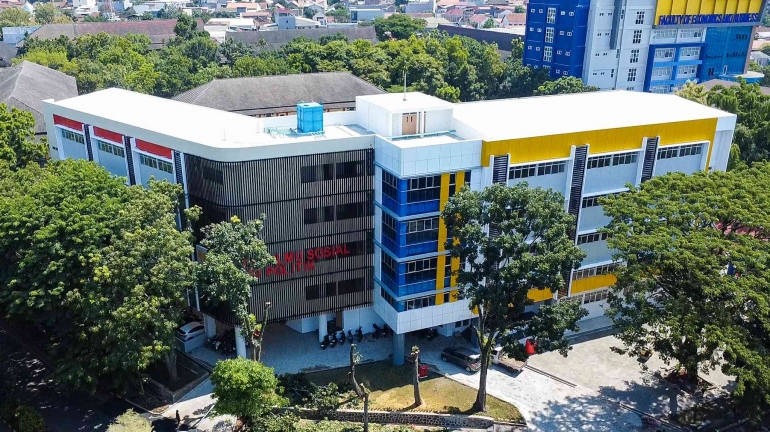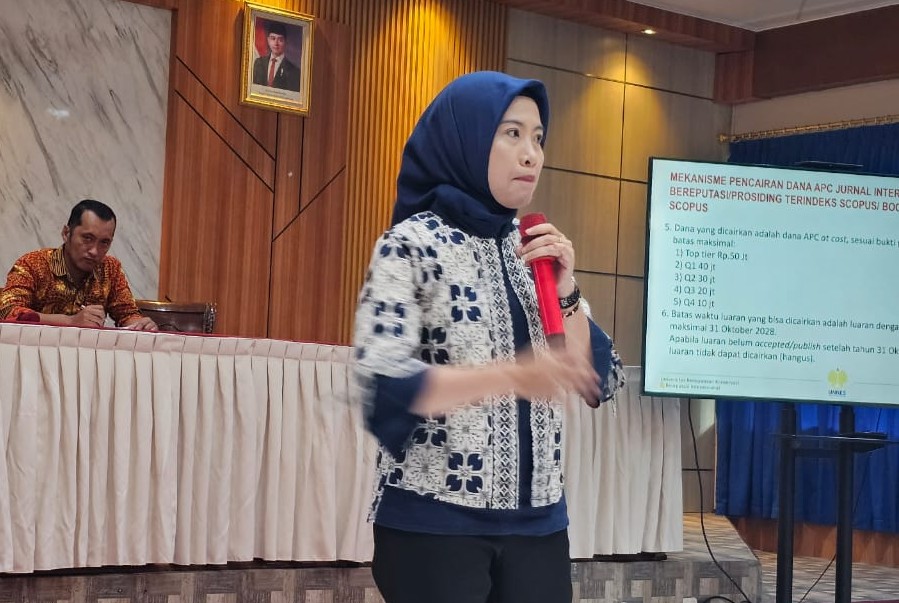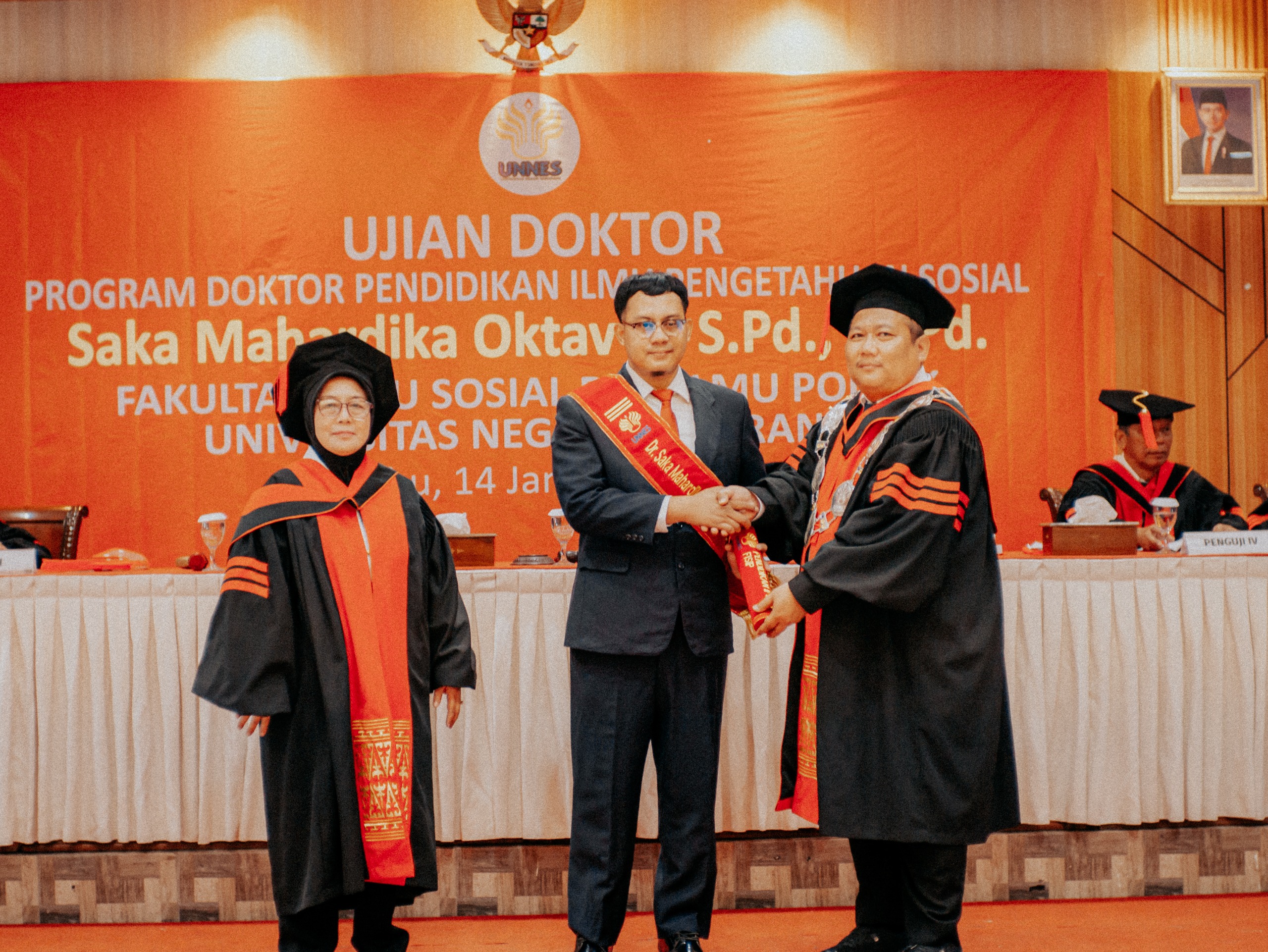Ranggawarsita Museum is the largest and most comprehensive museum in Central Java. This museum has collections related to history, nature, archeology, culture, the development period, and views of the archipelago. The design of the Ranggawarsita Museum building is in a postmodern classical (Joglo) style, and an area of about 1.8 hectares adds to the splendor of the museum building. The establishment of the museum began in 1975 as part of the Central Java Museum and Restoration Project. Governor Soepardjo Roestam inaugurated it as a preliminary museum on April 2, 1983. Then it was inaugurated as the Provincial Museum on July 5, 1989, by Prof. Dr. Fuad Hasan, Minister of Education and Culture at the time.
The name of this museum comes from the name of a poet named Raden Ngabehi Ranggawarsita. He was born on March 14, 1802, and is known as a great poet of Javanese culture who lives in Kasunanan, Surakarta. He is considered the last great poet of Java.

Ranggawarsita Museum has a collection of 59,810 objects divided into ten categories:
- Geology: 203 collections
- Biology: 618 collections
- Archeology: 5,211 collections
- Historika: 318 collections
- Philology: 37 collections
- Numismatic/heraldic: 44,966 collections
- Keramologika: 1,200 collections
- Ethnography: 6,818 collections
- Technology: 42 collections
- Fine Arts: 397 collections
The museum is divided into six main areas, namely Building A, Building B, Building C, Building D, and the Gold Room. Building A is divided into two floors, which generally display replicas of relics from the prehistoric era. The ‘Geology and Geography’ exhibition is located on the first floor of Building A. There are exhibits of various types of rocks that exist on earth, as well as a meteorite that was discovered in 1984 in Mojogedang, Karanganyar. The meteorite was used to enhance the prestige of the keris. Besides these stones, there are also texts about the distribution of rocks while on earth and interesting collections of minerals and natural stones, ranging from various gemstones to stalactites and stalagmites; on the second floor of Building A, there is a Paleontology (ancient) exhibition car with a collection of fossils of ancient trees, rocks, ancient peoples, bones, and animal body parts from the past, as well as other collections that are still alive. There is a collection of fossils of ancient trees, rocks, ancient people, bones, and body parts of animals from the past that are still alive. This place also preserves rare animals such as floaters, wild boars, deer, and eagles.
Building B generally exhibits cultural artifacts from Indonesia’s long prehistory, with cultural artifacts and artifacts from the Hindu-Buddhist civilization on the ground floor, including linga, yoni, statues, kentongan, jugs, bronze mirrors, statues of deities, and temples from Central Java. In addition, Islamic culture, including miniatures from the Great Mosque of Demak and the Kudus Mosque Tower, fragments of ornamental art, terracotta materials, replicas of calligraphy, ornaments from the Mantingan Jepara Mosque and Mustaka Mayon Mosque Jepara, copies of Al-Quran manuscripts, and Sumur Kalban Lasem chimneys, is also the main attraction, while the second floor displays ceramics and batik. The ceramics on display range from local ceramics to Chinese and European ceramics, with various types and patterns. Various pottery crafts and how they are made are also displayed in the form of dioramas and sculpture models. The batik section showcases various batik motifs from Central Java, including Surakarta, Pekalongan, Rasem, and Banyumasan.
Building C displays replicas of pre-independence Indonesian weapons, paintings, and relics. The ground floor of Building C is divided into several rooms dedicated to the history of the armed struggle, with objects used during the battle and dioramas of the struggle for Indonesian independence. Here are exhibited dioramas of battles that took place in Central Java and Yogyakarta, such as the 5-day battle in Semarang, the Palagan Ambarawa incident, the PKI rebellion in Cepu, the March 1 general strike, the Tritura movement, and others. On the second floor, various traditional techniques and crafts, industrial technology, and transportation, as well as various models of domestic crafts, are exhibited.
Building D generally displays the culture and traditional arts of Central Java, with the ground floor exhibiting exhibitions on development, numismatics, national symbols, archipelago traditions, classical rooms, and a bazaar; the second floor is divided into art spaces displaying art collections and equipment, performing arts (various interesting knowledge about wayang), performing arts (Kuda lumping, various Javanese Balongan arts), and music.
Lastly is the gold room, which specifically exhibits various kinds of collections made of gold in the classical period, ranging from necklaces, rings, shoulder straps, bingels, and various ceremonial tools. The gold collection was discovered in the classical Hindu-Buddhist period in Central Java. (Ranggawarsita Museum, 2023)
Socio-culture can be seen as a pattern in a local area and is often viewed bureaucratically as something that is organized, developed, and cultured, including theories of thought, belief systems, and daily activities. This can be applied in daily practice. Sometimes socio-culture can also be described as something that cannot be grasped by common sense or something that is beyond the capabilities of the human senses.
Social behavior, or human behavior, is solely understood as something that is determined by a stimulus that comes from outside. The individual, as an actor, is not only a passive responder to the stimulus but also interprets the stimulus received. Society is seen as a creative actor of social reality, so social change can occur and will have an impact on other aspects, especially social interaction in society.
The social aspects contained in the Ranggawarsita Museum include the interactions that occurred in society in an era, which are depicted through the paintings in the museum, and also documents that contain research on the social interactions of people that occurred in that era. social interactions that occurred, for example, in the pre-literate period, namely activities such as hunting and gathering food, which were interpreted by artifacts in the form of stone axes, wooden saws, bone axes, and others.
Then, in the following era, namely the Hindu-Buddhist era, of course, social activities or human social behavior were different from the pre-literate era because humans already had more advanced thoughts than before. Humans have created advanced technologies so that hunting activities are no longer carried out, but humans have started to carry out livestock farming and gardening activities. The process of social interaction that occurred in Indonesian society during the Hindu-Buddhist era included social structures that were innate to Hinduism and Buddhism. At this time, there were also kingdoms with Hindu and Buddhist religions, for example, the ancient Mataram kingdom and the Kalingga kingdom.
In the next era, namely the Islamic era in Indonesia, there was acculturation with the previous era, namely the Hindu-Buddhist era, which gave birth to new cultures such as mitoni, or seven monthly. The socio-cultural aspects contained in the Ronggowarsito Museum are mostly from Central Java, which during the Islamic era was the Demak Sultanate and the Mataram Sultanate.
Furthermore, there was the era of colonialism by the Dutch, and during this period, the social and cultural aspects of Indonesia were also influenced by the arrival of the Dutch. As an example of the result of colonialism in Indonesia, namely the change in the structure of society in this era, there are castes between native groups, colonial groups, and also a mixture of natives and Dutch. At this time, there were also religions under colonial rule, namely Christianity and Catholicism, because they adhered to the 3G, namely gold, glory, and gospel. which means looking for gold or victory and also introduces religion.
Furthermore, culture has the same elements in every culture in the world. both small and large cultures. Culture is very easy to change and is influenced by other cultures, so it will cause a variety of big problems. In culture, there is a socialist nature to society, in which there are certain social ties that create a common life. Culture includes a comprehensive understanding that, at the same time, can be described and seen as various variables and how to understand them. The concept of culture at the Ranggawarsita Museum covers various aspects of the life of the people of Central Java, both in terms of art, customs, history, and everyday life. Some of the cultural concepts that can be found in this museum include:
- Traditional Art
The Ranggawarsita Museum displays various forms of traditional Central Javanese arts, such as shadow puppets, batik, woodcarving, and other handicraft arts. Visitors can view a beautiful collection of art and learn about the techniques and meanings behind the works. - Custom
This museum also describes various customs that have been passed down from generation to generation in Central Java. This exhibition includes rituals, ceremonies, wedding procedures, and other traditions that are an important part of the lives of the people of Central Java. - History
The Ranggawarsita Museum displays the history of Central Java from time to time, including the Dutch colonial period, the struggle for Indonesian independence, and the development of Central Java as part of the Indonesian state. Visitors can view historical artifacts, photographs, and documents that describe the history of this region. - Daily Life
This museum also presents portraits of the daily lives of the people of Central Java, such as traditional houses, kitchen utensils, agricultural equipment, and other items used in daily life. It provides an overview of the lives of the traditional people of Central Java and how their culture has developed over time.
Through this diverse cultural concept, the Ranggawarsita Museum functions as a place to preserve and promote the cultural richness of Central Java to the wider community. Visitors can learn about the history and life of the people of Central Java through the collections on display, as well as appreciate the region’s rich arts and culture. Culture can occur at the Ranggawarsita Museum because the museum has the main function of being an institution dedicated to preserving, marketing, and promoting Central Javanese culture.
The process of the occurrence of culture in the Ranggawarsita Museum involves several historical factors and events that have shaped and influenced culture in Central Java. These factors include traditional heritage, religious influences, cultural interactions, colonial influences, and historical developments. These processes together form the rich and diverse culture of Central Java, which is reflected in the collections and exhibitions at the Ranggawarsita Museum. Through understanding and appreciating the process by which this culture occurred, visitors can gain a better insight into the history and cultural identity of Central Java.
Written by: Fajar, Hafiz, Satrio, Casriyah, Syafin, Sofia



